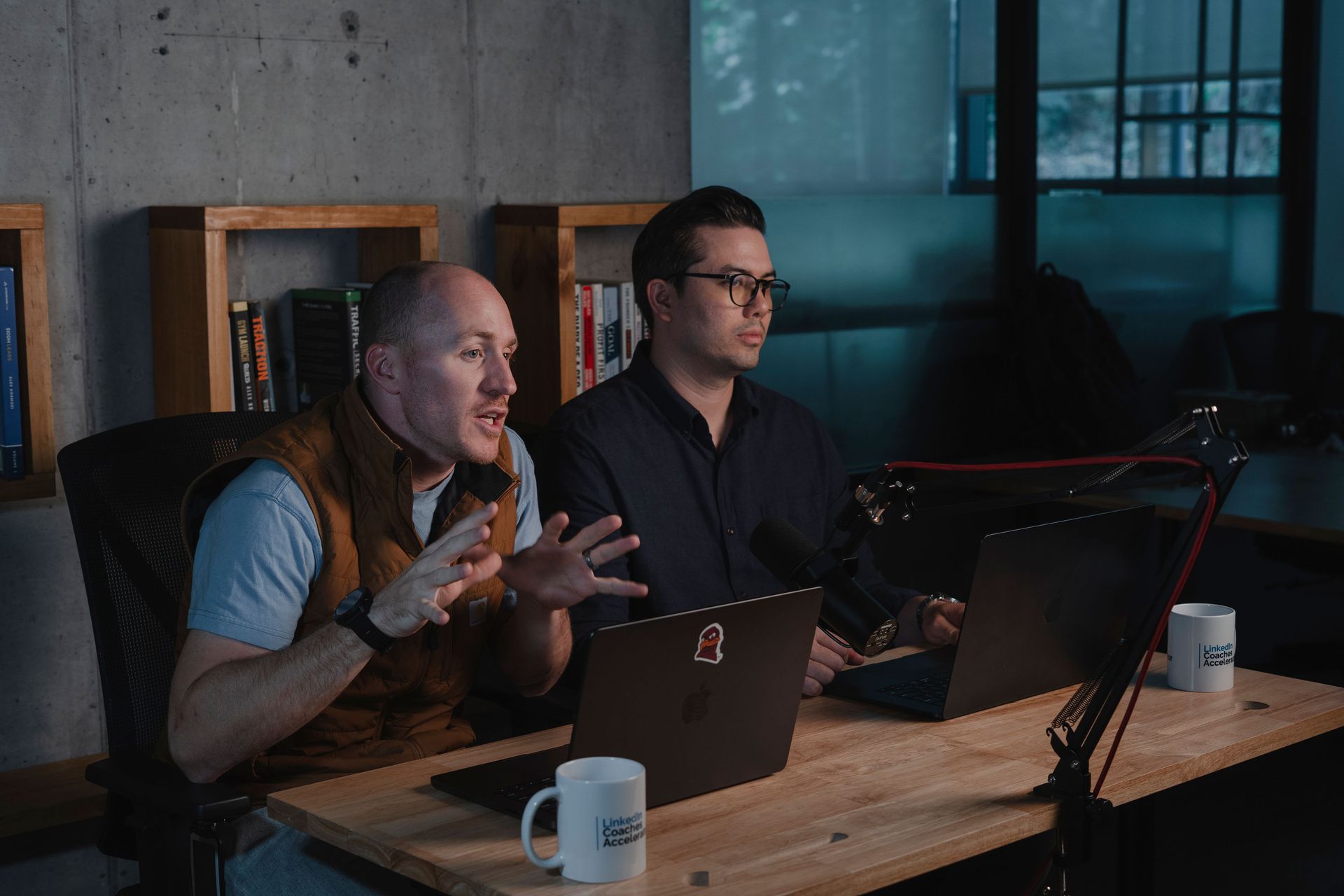How to Network as a Senior Level Job Seeker
TL;DR: How to Network as a Senior Level Job Seeker
- Relationships > Applications
Most senior roles are filled through referrals, not job boards. - Start Now
Build your network before you need it. - Lead with Gratitude
Reconnect with past colleagues through thank-you messages, not job asks. - Use Warm Intros
Ask mutual contacts for direct connections inside target companies. - Engage Publicly
Comment on LinkedIn posts to stay visible and build trust. - Host or Attend Events
Small gatherings create big networking moments. - Share Your Thinking
Post insights to show your leadership approach and values. - Ask for Advice, Not Jobs
Trusted advisors often open doors; if they know you’re looking.
A Personal Story from My Own Job Search
In 2019, I started job searching after spending eight years at the Boeing Company. Like many senior level professionals making a shift, I wasn’t entirely sure how to begin.
What I did know, though, was that relationships matter.
So I started small.
I began sending simple gratitude messages to my old managers and former colleagues who had since moved on from Boeing and joined other companies. These weren’t asks or cold pitches. Just sincere notes of thanks for their past support, and a quick update on where I was in my career.
The results? Almost 100% of the messages got a response. And several turned into coffee chats, referrals, and even interview opportunities. In the end, I landed a Senior Manager of Product role at Amazon.
That experience reshaped how I thought about networking during a job search. Especially at the senior level.
This blog outlines the principles and tactics I now share with clients at Broda Coaching who are looking for senior, principal, and executive-level roles.
If you're wondering how senior level job seekers should network in today’s job market, this post is for you.
Why You Should Build Your Network Before It's Too Late
Too many job seekers only start networking when they need a job. But by then, it’s often too late.
At the senior level, roles aren’t just posted on job boards. Many are filled through internal recommendations, talent communities, or via direct introductions from trusted insiders.
In other words:
You can’t apply your way into your next job. You have to network your way in.
And that takes time.
Most hiring managers and leaders don’t want to take a chance on someone they don’t know, or someone who only reaches out when they’re in need.
This is why building long term relationships matters. It opens up what some like to call "hidden job opportunities."
This also means investing in your personal brand early and consistently, so when the right opportunity arises, you're already top of mind.
Senior level networking is about consistency, visibility, and value, not volume or instant ROI.
So if you’re job searching now (or even
thinking about a change), the time to start building relationships is
today.

How to Network as a Senior Level Job Seeker: 7 Strategies for Success
Here are seven of the most effective strategies I coach job seekers to use when building their network. These go beyond the basic advice and help establish long-term, mutually beneficial connections.
1. The Gratitude Outreach Method
When thinking about networking as a senior level professional in today's job market, start here.
This method worked for me personally. In 2019, after nearly a decade at Boeing, I reached out to previous managers and mentors with short messages of thanks. Not one of those messages asked for a job. But nearly all of them turned into conversations, and those conversations led to opportunities.
How to do it:
- Keep it short. Three or four sentences max.
- Make it personal. Reference a specific time, moment, or contribution that impacted you.
- End with a light invitation. Ask if they’d be open to catching up, not to help you find a job, but just to connect.
Example message:
“Hi [Name], I was reflecting on my time at [Company] and just wanted to say thank you. Your mentorship during [project/team] really shaped how I think about leadership today. I’d love to catch up sometime if you’re open. Hope you’re doing well.”
Why it works:
It’s authentic, respects their time, and makes no demands. Because it centers
them, people respond because we all want to know we made an impact.
2. Warm Introductions from Mutual Contacts
If you’re targeting a specific company or industry, warm intros are gold as a job candidate.
They shortcut the trust-building process. You’re no longer a random applicant. You’re now someone a shared contact vouched for. That subtle difference completely changes how you're received.
How to do it:
- Search your LinkedIn profile for shared connections with employees at your target company.
- Reach out to your contact and cover the following in a series of messages:
- If you haven't chatted in sometime, ask how they've been or how their current role is
- Provide something of value such as a relevant article you read on industry trends
- Let them know you're exploring new roles
- Mention the person you'd like to connect with
- Ask if they’d feel comfortable making an intro
- Offer a short blurb they can copy/paste in the intro message, make it easy for them.
Example blurb you can provide:
“Hey [Target Contact], I wanted to connect you with [Your Name], we worked together at [Company]. They’re exploring new leadership roles in [industry/function] and are interested in learning more about [Target Company]. Figured a quick intro might be helpful for both of you!”
Pro tip:
After the intro, circle back to thank your existing contact and follow up again once the conversation happens. That simple gesture leaves a positive impression and encourages future introductions.

3. Commenting with Intention on LinkedIn
Still wondering how to network without sending dozens of cold messages?
Start in the comments.
Comments are a low-effort, high-reward way to build familiarity, especially when you consistently engage with people in your desired industry or role.
How to do it:
- Make a list of 5-10 target professionals: hiring managers, thought leaders, or directors in your space.
- Set a weekly goal: engage with 3-5 of their posts every week.
- Write meaningful comments. Add context, personal reflections, or thoughtful questions.
Example:
Instead of commenting “So true,” say:
“This reminded me of a project we ran at [Company] where we struggled with the same thing. One thing that helped us was [brief insight]. Curious if your team has tried anything similar?”
Why it works:
Over time, people begin to
recognize your name. When you eventually message them directly, you’re not a stranger, you’re that person with insightful takes. This sets you up for networking success.
4. Attend Strategic Networking Events (Even Virtual Ones)
Despite what you’ve heard, networking events aren’t just for extroverts, or early-career professionals.
In fact, a good amount of senior level hiring happens through informal or off-platform discussions, especially at in-person or virtual events.
How to do it:
- Look for curated events like:
- Industry leadership panels
- Invite-only LinkedIn Live events
- Alumni networking events
- Conferences with breakout rooms
- Focus on showing up as a peer, not a job seeker.
- Ask thoughtful questions, take notes, and ask to connect on LinkedIn.
- Send a “great to meet you” message with a couple of takeaways you appreciated from your discussion.
What to say in follow-up:
“Really appreciated your insights during the session on [topic]. I’d love to stay in touch, would you be open to connecting here?”
Why it works:
These events compress weeks of online engagement into a single hour and make establishing genuine relationships much easier. They often lead to introductions you wouldn’t get through applications alone.
5. Host a Roundtable or Invite-Only Meetup
Want to grow your personal brand, expand your network, and gain insights at the same time?
Host something small.
You don’t need a big platform, a podcast, or a polished deck. Just a Zoom link and a short list of thoughtful professionals you respect.
The goal isn’t to impress. It’s to connect. As the host, you position yourself as a convener of smart, forward-looking people. That kind of signal builds credibility fast.
How to do it:
- Pick a topic that sparks real conversation. Make it relevant to your role, industry, or area of leadership.
- Example themes:
- “Navigating Tech Leadership in a Shaky Economy”
- “What Senior Hiring Managers Are Actually Looking for in 2025”
- “Scaling Teams Without Burning Them Out”
- “Are Hidden Job Opportunities Real? Why or Why Not?”
- Curate your invite list. Think 5-7 peers or colleagues; former coworkers, industry contacts, past managers, or respected voices in your space. Keep it personal. Avoid mass invites.
- Send 1:1 messages. Let them know you’re pulling together a small group for open discussion, not a formal event. Make it clear this isn’t a sales pitch or self-promotion session. It’s a peer-to-peer space for exchanging insight.
- Set a simple agenda. No slides. Just a few starter questions to prompt discussion:
- What’s the biggest shift you’re seeing in your org this year?
- What’s working in hiring (or team retention) that others might not know about?
- What do you wish you’d known before your last big role change?
- What are the most surprising industry trends in the past six months?
- End with generosity. Thank attendees afterward with a short personal note. Offer to support their content, share their open roles, or make intros where relevant.
- Optional: With permission, summarize key takeaways from the conversation and post them on LinkedIn (anonymized). It reinforces your brand as someone who creates spaces for valuable insight and invites others to connect.
Why it works:
Hosting is a powerful tool that puts you in a position of quiet authority. It says: This person knows smart people. This person brings value. This person leads.
And in the eyes of hiring managers, leaders get hired.
6. Use Content to Reinforce Your Personal Brand
At the senior level, your content can draw your network to you.
Posting consistent, valuable content shows people how you think, what you value, and how you approach challenges. It’s an indirect, but powerful way to attract the right people and opportunities.
How to do it:
- Pick 2-3 themes that align with your expertise: leadership, innovation, hiring, product strategy, etc.
- Share stories from your experience:
- A time your team overcame a tough challenge
- Lessons from a failed initiative
- What you’ve learned about managing through change
- Post 2-3 times a week if possible. If that’s too much, comment with intention (see tactic #3).
- Always bring it back to what others can learn from your experience.
Example post topic:
“3 lessons I learned managing a team through an acquisition (and what I’d do differently next time)”
Why it works:
People hire what they can see. And content is the most scalable way to show them how you think.
7. Reconnect with Career Coaches, Mentors, and Advisors
You don’t need to go it alone.
Career coaches, former mentors, and peers you’ve trusted over the years can be some of the most valuable allies during a job search.
They know your story. They’ve seen your work. And they probably know people who are hiring.
How to do it:
- Send a message that’s honest and low-pressure:
“Hi [Name], I’m exploring new roles and thinking through next steps in my career. I’ve always valued your perspective, would you be open to a short catch-up?” - Be clear about what you’re targeting:
- “I’m focused on senior operations roles in clean tech, ideally at mission-driven orgs.”
- “Looking to move from large enterprise into midsize orgs where I can scale systems.”
- Seek advice and insights, not a job. Often, this turns into job search support anyway.
Why it works:
Relationships are your best long-term career strategy. These are the people who
want to help—but they need to know you’re in motion.
Final Takeaway: Networking Is About Creating Opportunity, Not Asking for Things
When senior level job seekers ask me how to network without feeling awkward or sales-y, I tell them this:
Networking is not about asking for a job.
It’s about positioning yourself as someone who adds value, builds trust, and creates momentum through conversations, not transactions.
Here’s what that actually looks like in practice:



1. Build Long Term Relationships (Not Short-Term Favors)
The most effective job seekers treat networking like gardening, not fishing.
That means:
- Planting seeds early
- Staying consistent over time
- Being patient while trust and visibility grow
You don’t need a list of “hot leads.” You need a circle of peers who know who you are, what you do, and what you care about. These long term relationships become your referral engine. Not because you asked, but because you showed up, repeatedly, providing help and guidance when needed.
2. Listen More Than You Speak
It’s easy to think that networking means perfecting your elevator pitch.
But in reality? The people who make the strongest impressions ask better questions.
They’re genuinely curious. They show interest in other people’s work. They listen for what matters, then respond with empathy, insight, or encouragement.
If you’ve ever left a conversation and thought, “That person really got me," chances are, they didn’t talk much. They listened well.
Listening is a competitive advantage. And it’s especially powerful in a crowded job market where most people are only talking about themselves.
3. Help Others Before You Ask for Help
This is the golden rule of relationship-building at the senior level.
When you lead with generosity, your network feels the difference. It’s not about being manipulative, it’s about making your presence valuable before you make a request.
Examples:
- Share a relevant article with a peer based on their recent post
- Introduce two people who could benefit from knowing each other
- Offer to mentor someone junior in your network
- Comment on someone’s job announcement with an insight or a thoughtful question
These micro-actions compound over time. They create a brand halo around your name, so when you do need something, people want to support you.
So as you approach your job search, don’t focus solely on:
- Hitting "Apply" 20 times a week
- Perfecting every word of your resume
- Waiting for a recruiter to call you back
Instead, focus on starting real conversations.
Because in a hiring market where trust is scarce and high-quality referrals rule, genuine connections are your most valuable career currency.
They will outlast any resume you send.
And they’ll open more doors than any job board ever could.

How We Can Work Together
If you’re a senior level job seeker navigating today’s hiring landscape, you're not alone.
Whether you're ready to pivot industries, re-enter the job market, or grow into a leadership role, there's a proven way to do it. Without burning out.
At Broda Coaching, we help leaders clarify their story, strengthen their personal brand, and build real relationships that move the needle.
No fluff. Just strategy that works.








